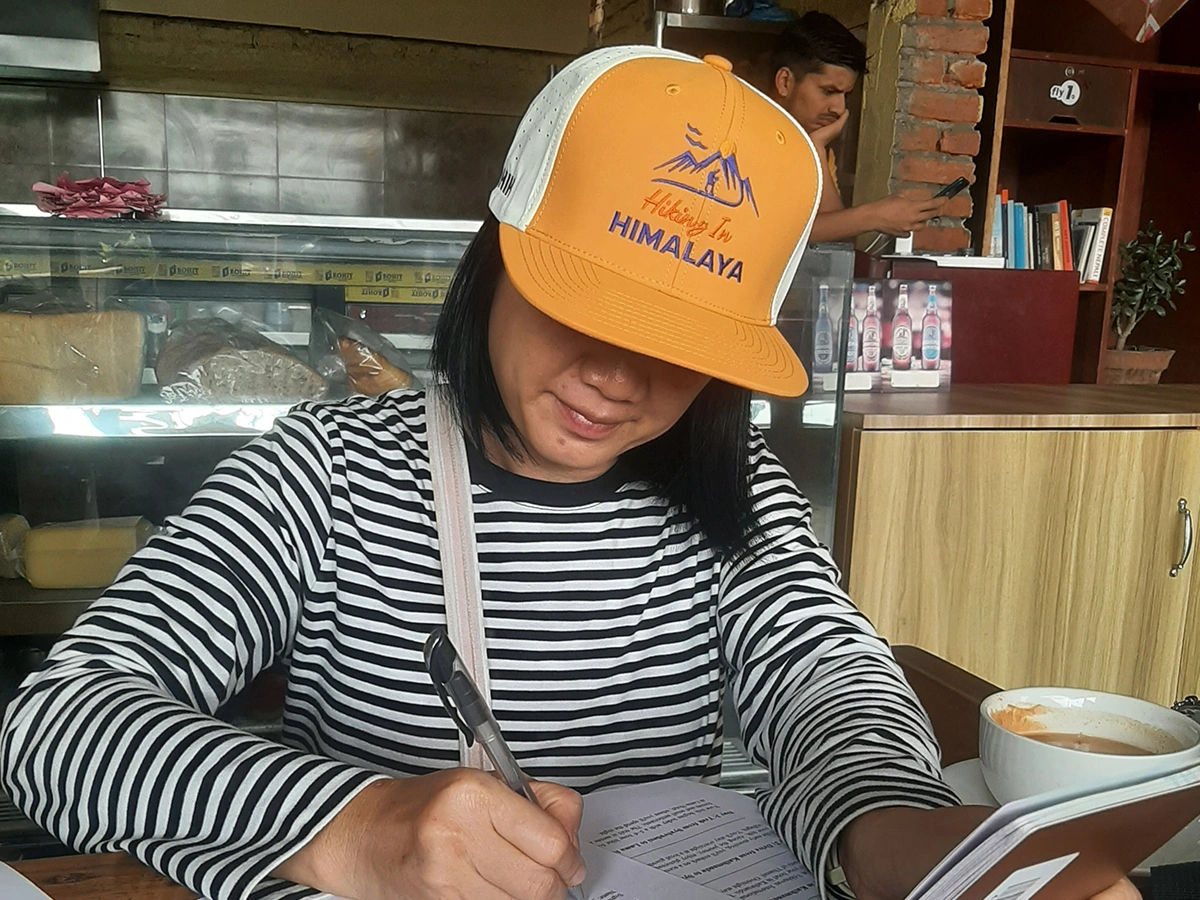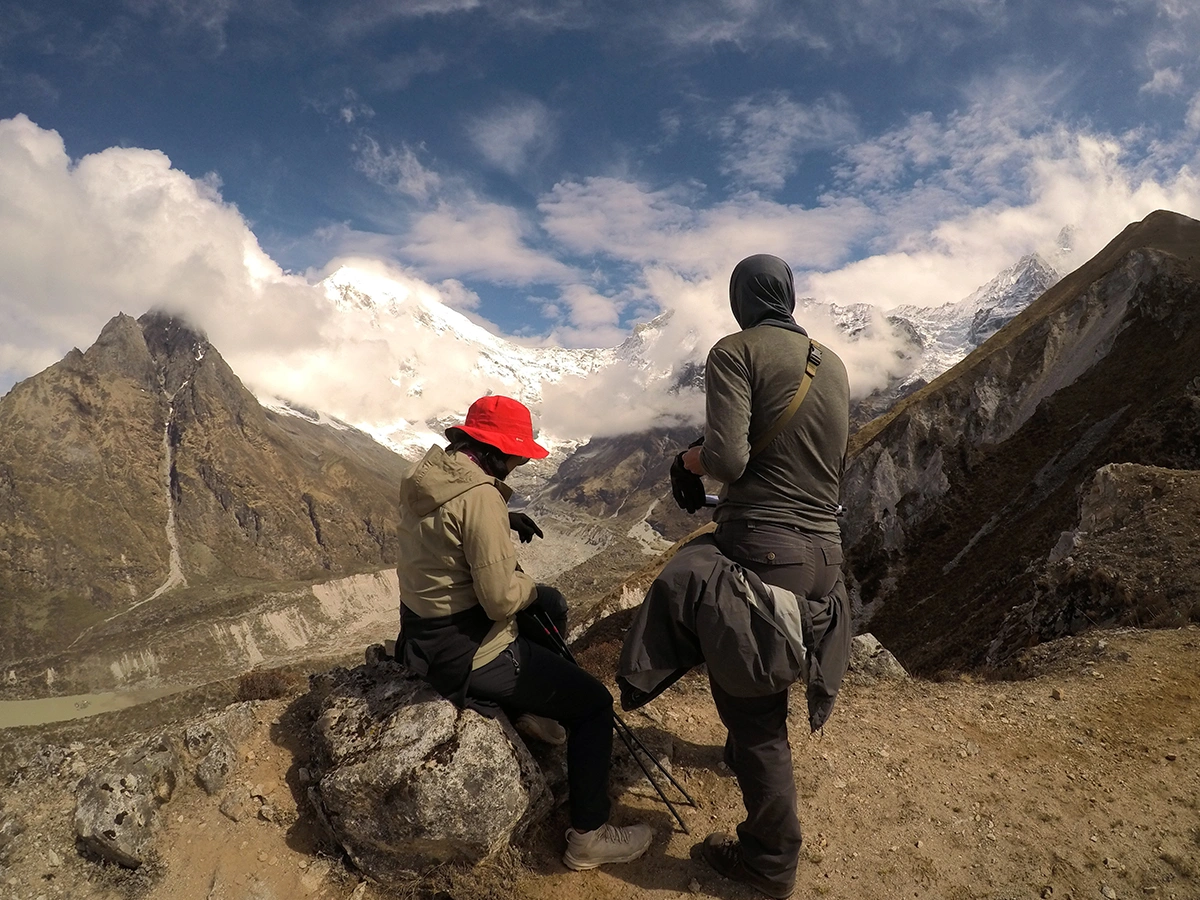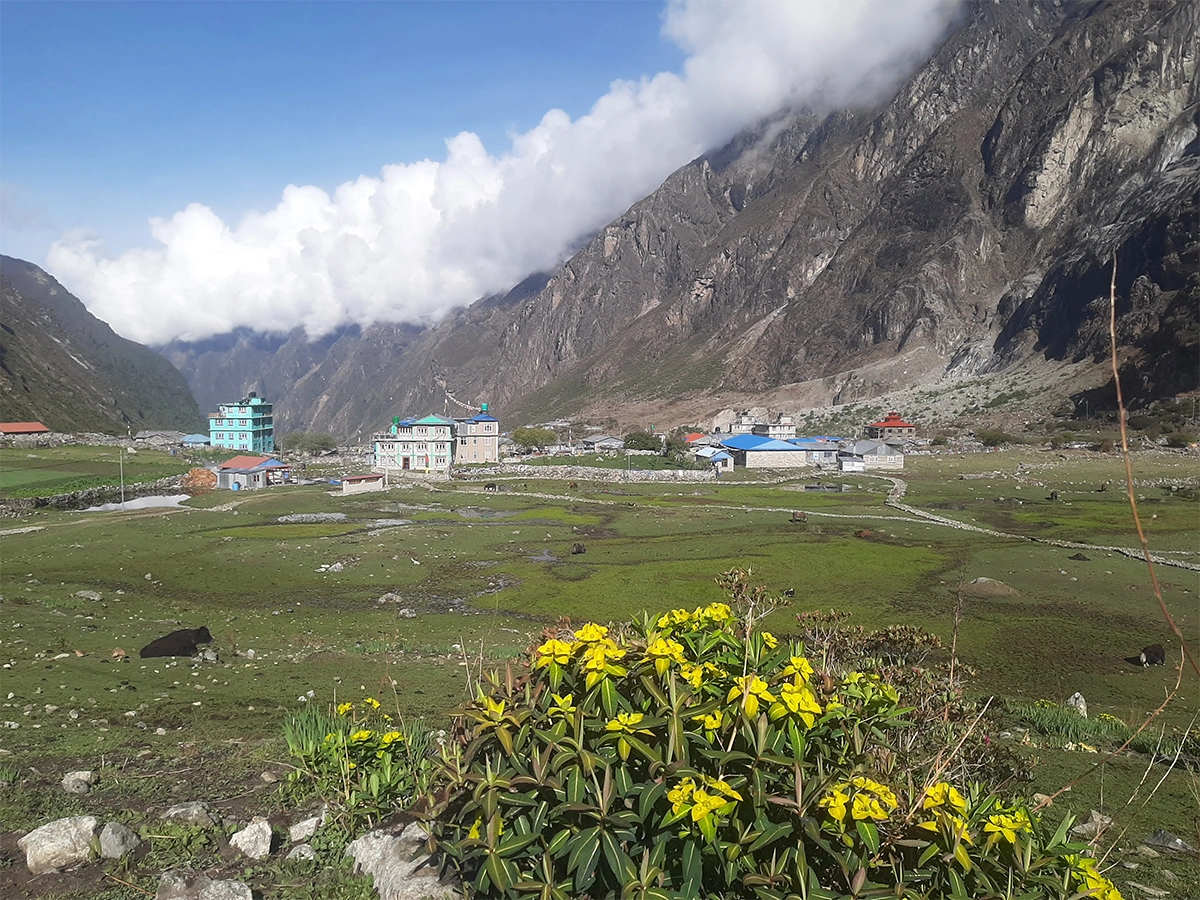The Langtang Valley trek is the best short trek in Nepal. You do not have to do months of planning and preparation to do the Langtang Valley trek. Both beginner and experienced trekkers can complete this incredible trek even on short notice.
You can complete this entire trip in just 8 days with us. Our Langtang Valley trek itinerary does not include arrival and departure from Kathmandu and accommodation/meals in Kathmandu, so you have to plan it.
Even if you consider arrival and departure days, you will only need two extra days. Talking about the Langtang Valley trek itself, it is an adventurous trek in the central Himalayan range in Nepal.
Unlike the other popular treks in Nepal, the Langtang Valley trek progresses quickly. You will see dense rhododendron and bamboo forested hills, bushes, alpine meadows, and glaciers in just 3 to 4 days of walking.
The landscapes change drastically from Syabrubesi to Tserko Ri. It will keep you on your toes and won't let you get bored. The trail is adventurous.
It ascends and descends through lush hills, crossing thrilling suspension bridges and passing by many small settlements. You will see the beautiful Langtang River, colorful terraces, and stupas while trekking.
Most importantly, you will see the most exquisite Himalayan mountains during the Langtang Valley trek, such as Ganesh Himal, Langtang Lirung, Dorje Lakpa, Kang Guru, Sishapangma, Gaurishanker, Yala Peak, etc.
Finally, the Tamang community grounds the Langtang Valley journey with their heart-warming hospitality and rich ancient cultural heritage.
Overall, the Langtang Valley trek 8 days is one of the best short treks in Nepal that is recommended to travelers who want to have a quick getaway in the Himalayas!
Facts:
- The meaning of Langtang is "lang - yak" and "tang - to follow". There is also a golden Buddha statue in the Gumba in Langtang. Likewise, locals have also established a memorial chorten in memory of villagers who lost their lives during the 2015 earthquake in the Langtang village.
- On the way, you will pass by Langsisa. Locals widely call it a place where a yak died. During the monarchy in Nepal, there was a small airport in Langsisa. You can still see the runway there.
The 2015 earthquake's destruction and the trail condition now
Alongside Everest and Annapurna, Langtang has always been one of the top three trekking destinations in Nepal. However, the 2015 earthquake utterly destroyed the Langtang region, especially the Langtang Village, and tourism slowed down.
As time passed, the teahouses were rebuilt and the Langtang Valley once again began welcoming trekkers from all around the world. Like old times, trekking in the Langtang region is once again becoming popular among adventure lovers.
Langtang Valley trek and Gosaikunda Lake trek are two all-time favorite treks in this region. This is our Langtang Valley trek package. However, if you have time and budget, you can consider combining the Gosaikunda Lake excursion in your Langtang Valley trek itinerary.
Highlights
- The best short trek in Nepal
- The closest trekking destination from Kathmandu
- Explore the diverse flora and fauna of Langtang National Park
- Warm hospitality of the locals
- Learn the way of life for the Tamang community in the mountains and their rich cultural heritage
- Enjoy delicious mountain food and beverages, including the special yak cheese
- Trek through rhododendron and bamboo forests, following the beautiful Langtang River
- Spend nights in picturesque mountain villages and experience a simple mountain lifestyle
- Witness stunning landscapes and mountain vistas throughout the journey
- A quick trip packed with adventure, cultural experiences, and nature
- A perfect trek for both first-time and experienced trekkers
- Less crowded trail- enjoy tranquility and unwind
- Catch a gorgeous sunrise and incredible mountain panorama from Tserko Ri
Why should you choose the Langtang Valley trek 8 days as your next adventure in Nepal?
There are more reasons to travel to Langtang Valley than we can share. But we have shared a few of them below:
Never been to the Langtang region?
The first reason is definitely the obvious one- if you have not explored the Langtang region yet, the Langtang Valley trek 8 days will be a great option.
A great introduction to the Himalayan trek for beginner trekkers
If you are trekking for the first time in the Himalayas, then the Langtang Valley trek can be one of the best treks for you.
This trek is easily accessible from Kathmandu, and the trail is well-established with ample accommodation for the trekkers.
Although the trek is short, you will experience Himalayan terrain, high altitude, and varying climatic zones.
In short, the Langtang Valley trek is a great way to prepare yourself for bigger and challenging treks such as Everest Base Camp and Annapurna Base Camp.
Need a quick rush of adrenaline and want to spend some time away from the hustle and bustle of city life?
Ideal for experienced trekkers who want to take a quick trip to the Himalayas. The Langtang Valley trek offers all the adventure and excitement in a very short time.
The trail is not crowded like the famous treks, so you will enjoy a peaceful environment. The journey will let you unwind, relax, and take a break from the chaos of city life.
Best mountain views in the Valley of Glaciers
The Langtang Valley is dominated by the Langtang Himalayas. If you love mountain views, then the Langtang Valley trek route offers some of the most stunning mountain vistas.
We are not even exaggerating it. The Langtang Valley is known as the Valley of Glaciers. Now imagine the kind of mountain and glacier views you will see on this trek.
The Tamang culture, lifestyle, and hospitality
Tamangs are the main inhabitants of the Langtang region. The Langtang Valley trek offers an excellent glimpse into their lifestyle and culture.
If you know about Tibetans and their culture, you will find quite a few resemblances because the Tamang are believed to be descendants of Tibetans.
The villagers are friendly and welcoming. You will have a great time seeing their daily unique life in the mountains and learning about their practices and beliefs.
The Langtang National Park
The Langtang National Park is the first Himalayan national park in Nepal, established in 1976. It protects and preserves the Langtang Valley and the whole Langtang region.
The Langtang Valley trek route is inside the national park. As the trail ascends different climatic zones, you will see diverse flora and fauna while hiking.
Kyanjin Gompa
Kyanjin Gompa is the spiritual hub in the Langtang Valley. It is also the highest point you sleep on this trek. As per the locals, the gompa (monastery) is believed to have been built 280-300 years ago.
Do not think that Kyanjin Gompa is just a monastery at a high altitude. It is a whole village. The village is surrounded by towering snow-capped mountains and prayer flags fluttering in the crisp air.
Local yak cheese factory visit
Kyanjin Gompa is also famous for the local yak cheese factory. You can see the making process and taste it. Many trekkers bring the cheese as a souvenir with them.
Trust us, it will be one of the best cheeses you've ever had. The creamy and fresh taste of the cheese is sure to linger in your mind.
The final Tserko Ri hike
The Tserko Ri hike is the final hike during the Langtang Valley trek. You will ascend 5,033 meters, following steep, rocky terrain.
This final hike aims to present a gorgeous sunrise and breathtaking panorama of the Langtang Himalayas. The hike is tough, but the view is even more rewarding.
Langtang Valley trek difficulty
Langtang Valley trek difficulty is moderate. However, this trek can get quite challenging for trekkers who are not fit or physically active. So, your fitness highly determines the Langtang Valley trek difficulty.
In Nepal, we consider the Langtang Valley trek as a beginner-friendly trek or a perfect trek for an introduction to the Himalayan trail. If well prepared, anyone can complete the Langtang Valley trek.
What makes the Langtang Valley trek difficult?
- Rugged terrain
- Steep uphill and downhill walking
- On average, 6 hours of walking each day
- Varying environment and high altitude
- Limited modern facilities
- Langtang Valley trek distance: around 75 kilometers
What do you need to complete the Langtang Valley trek?
- Basic fitness: You must be able to walk uphill and downhill for a few hours a day.
- Positive attitude: Trekking in the Himalayas comes with limitations, so one must be able to adjust. Likewise, the varying weather, altitude, climate, and long walks also demand decent mental endurance.
- Willing to embrace nature and limitations of the remote region: Again, it is about your mindset. Enjoy the journey, do not let sharing on your socials take your mind, live in the moment, explore, and challenge yourself.
Perks of trekking in Nepal with the Hiking in Himalaya team
- Affordable Langtang Valley trek cost
- Best trek service
- No delays and fixed departure guaranteed
- 25+ years of expertise
- Safety assurance
- A professional team to assist you 24/7
- Flexible Langtang Valley trek itinerary
- Group and private departures
- Complimentary airport pick up and drop off (if needed)
- Complimentary duffel bag to use during the trek


